|
General Towing Theory
Model tug boats act just like the real ones. As
they pull a load, the load pulls back! The load is transferred to the tug's hull
where "The line meets the steel" er...eh...plastic. Where you attach a
tow line is important for the best control of the tug.
The following are tests of three points of
contact for the tow line to demonstrate the physics involved between a tow boat
and its load.
The first is for towing marks on a body board. The
second is for towing a heavier load. The third is pulling on a fixed object to
demonstrate the relationship between the force exerted on the tug by the tow
line and the tug's rudder position.
Your feedback is welcome. Click all framed
photos to enlarge.
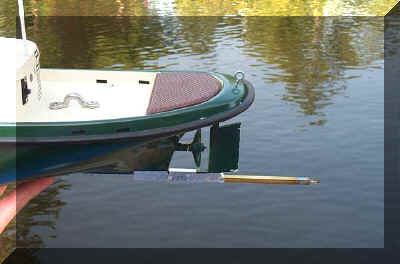
Here is our subject. A Vac-U-Tug Jr. running seven cells (8.4
Volts). I have installed three tow points. Point A is a stainless eye
strap just behind the cabin. It is screwed into a small ply reinforcement under the deck and sealed with
marine goop. It is well forward of the rudder. Point B is a small plated
loop just behind the rear hatch cover. It is almost even with the rudder. Point C
is at the end of the temporarily extended skeg and is well aft of the rudder.
Point C has been used by several builders to tow marks.
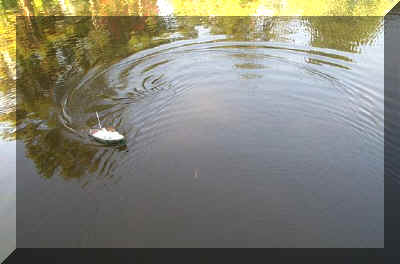
As you can see, the boat is very maneuverable and can turn in a
6 foot circle as built according to the plans.
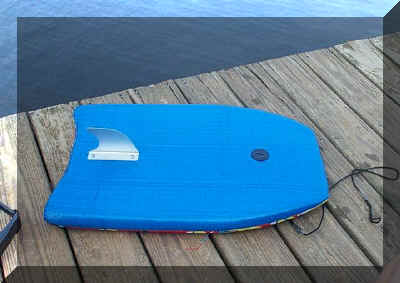
The body board is a standard poly wrapped foam board with a
small aluminum fin added to the underside.
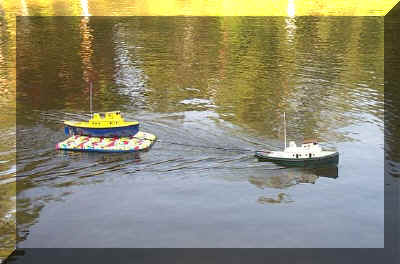
For the first test, I've loaded the board with another Vac-U-Tug.
With its battery, it has a total weight of 4 pounds. Even with that much
weight, you can see by the wake that the tug can handle the load.
|
Test 1 -
Towing Marks
|
| Towing from point A gives great control.
Turning radius is 3 feet. (6 foot diameter circle) |
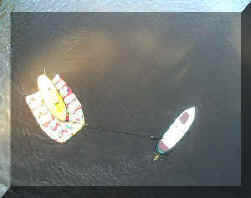 |
| Towing from point B. Note the shallower
angle. Good control. Turning radius increased to 5 feet. |
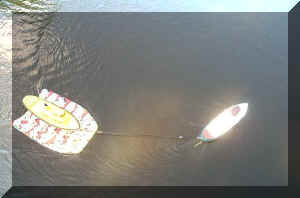 |
| Towing from point C. A little shallower angle
than above. Still has good control. Turning radius increased to 7
feet. |
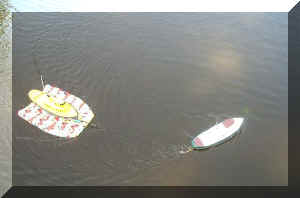 |
| SUMMARY:
Even with the four pound load, the resistance of the body board is easily
overcome by the tug. Although towing from point A gives greater maneuverability,
all three tow points work well. |
|
Test 2 - Towing a disabled craft.
To simulate a hard tow, I'm pulling the yellow tug broadside. The load
moves slowly and pulls hard on the towing craft. |
| In this example I'm towing from point A.
Since point A is in front of the rudder, the towing boat can pivot
against the tow line and maneuver easily. Make sure there are no knots or
fittings that would catch on the bullwark (railing) as the line slides
across the stern of the boat during a turn. |
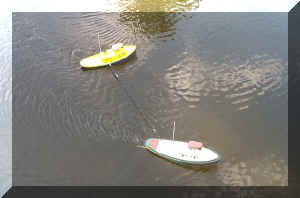 |
| Here I'm towing from point B. At full
right rudder the tug is angled but the direction of the water being
pushed rearward by the prop is parallel to the tow line. Since the angle
of the pushing force is parallel to the tow line, the net turning force
is zero. The only way I returned to shore was to reverse the
towing tug into the gold tug to slack the line and spin both boats around. |
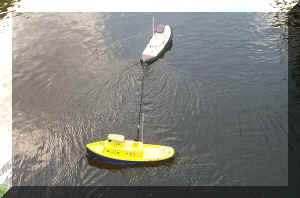 |
| Here I am towing from point C. (Note
the line is submerged.) Applying left or right rudder had an opposite
affect on direction. Here I'm applying full right rudder but the towing
tug is actually moving left. The extended skeg gives the load too great of
a mechanical advantage. As the tug tries to turn, the load pulls it
strait. |
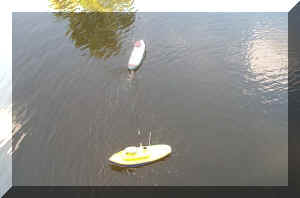 |
| SUMMARY:
Serious towing must be from a point forward of the rudder. There, the load
actually helps the tug turn as the force on the tow line tends to pull the
tug through the turn. When the tow line was attached at or to the rear of
the rudder, the tug was unable to overcome the load's force that pulled
against the stern of the boat. With right rudder, trying to move the tug
clockwise, the counter-clockwise force of the load equaled the force of
the rudder and no turn was possible. |
|
Test 3 - Pulling against a fixed object.
To simulate a hard tow and to better show the forces at work from the
three points.
|
| The tug is attached to a fixed object in the
foreground at full throttle. |
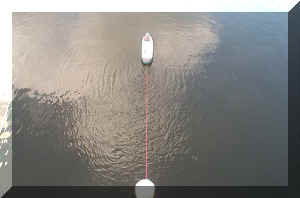 |
| Attached at point A. The force of the
rudder causes the tug to rotate at the point of contact allowing it to
turn freely right... |
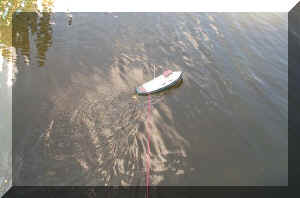 |
| ... and left. |
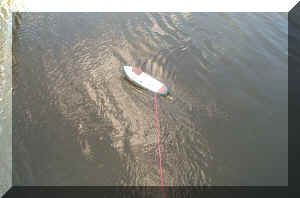 |
| Attached to point B, full right
rudder, the boat is angled but is not changing direction. The force of the
tug is parallel to the line. No lateral force is created. No control at
all. |
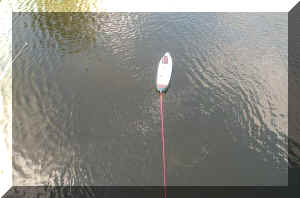 |
| Full left rudder from point B. No
different than right rudder. |
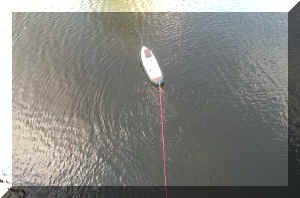 |
| From point C, at full right rudder,
the mechanical advantage of the line pulling against the extended skeg
holds the boat strait. The rudder throws the prop wash (energy) slightly
to the right causing the boat to move left, opposite from the direction
of the rudder. |
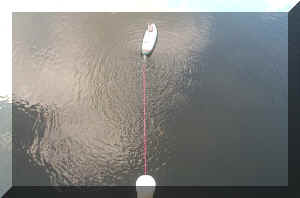 |
| Same point C tow at full left rudder.
The tow boat is moving to the right. |
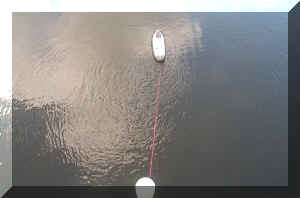 |
|
SUMMARY: At a heavy load or being tied to a
fixed object, the tug cannot maneuver unless the tow point is forward of
the rudder. Of course, a contact point too far forward will cause the load
to help the turn too much and the tug will tend to over-steer. |
|

















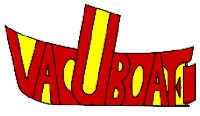 TM
TM